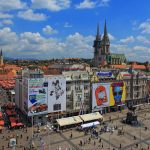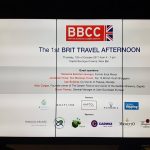Where can you enjoy the arts in the city, where are hidden playgrounds for children located, where are green oases hidden in the urban jungle, and where are places where you can meet creative people… These are just some of the questions answers to which can be found in the new alternative guidebook called Lost in Zagreb. The guide is written in Croatian, English and Arabic languages, reports Večernji List on October 29, 2018.
The guide was created as part of the “Magic Carpets” project, aimed at using artist residencies, workshops and exhibitions to foster intercultural dialogue between 13 European countries. The guidebook can be seen as an art book since it was created by the Danish artist Maj Horn, in cooperation with the Lab 852 organization, local artists and asylum seekers. The project was supported by funds from Creative Europe, the Ministry of Culture, the City Office for Culture, and the Danish Arts Foundation. The guidebook is free and will be available in city libraries.
“During my residency in Zagreb, I dealt with mapping hidden economic layers together with local artists and migrants who are staying in the former Porin hotel. We had three artistic walks and three workshops which resulted in the final product,” said Maj Horn. The guidebook is divided into six thematic parts: socializing, art, fashion, children, green areas and markets.
“We would like to share our favourite places in the city with others. The places were chosen arbitrarily by the participants. It is interesting that the authors are of different profiles, so we can see how the city is seen by a taxi driver from Baghdad, a poet, a cook or local artists,” explained the author.
The guidebook on Zagreb is a process, not an end result
Creating the guidebook helped Horn in her social art, while for asylum seekers the participation in the project was an important step in the process of adaptation. “The guide is in Arabic precisely because most of the authors are native speakers of that language. This is also the first guidebook to Zagreb in Arabic,” said Marija Kamber, an artist.
The alternative guidebook “Lost in Zagreb” is aimed at everybody who wants to enjoy hidden, yet beautiful and inexpensive venues in the city. “In addition to all the other things this publication is, it is also a witness to the current state of affairs in Zagreb, and our goal is certainly to encourage not only asylum seekers but also local people to get more involved in the life of the city,” said the authors. Therefore, the book should not be understood as an end result, but rather as a process.
If you are interested in more articles about Zagreb, visit our dedicated section.









